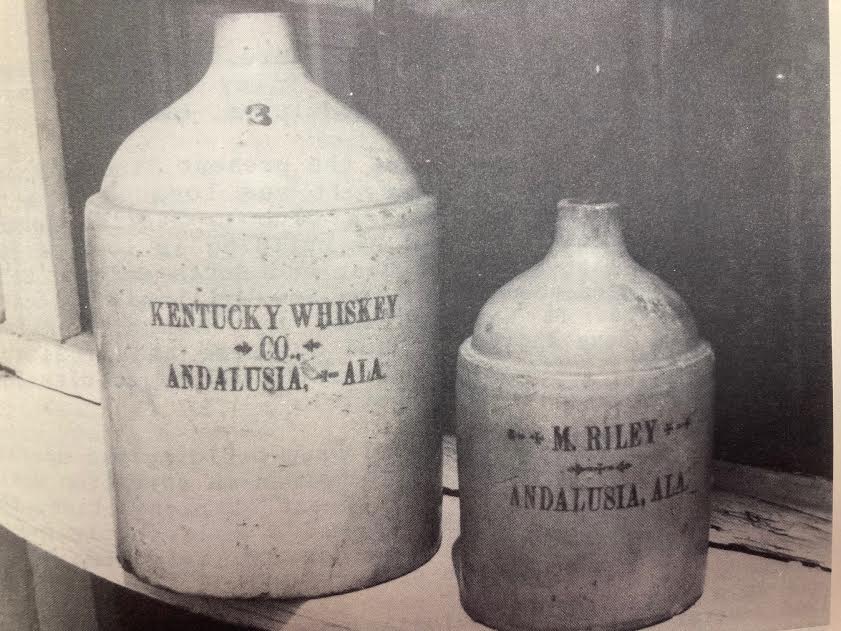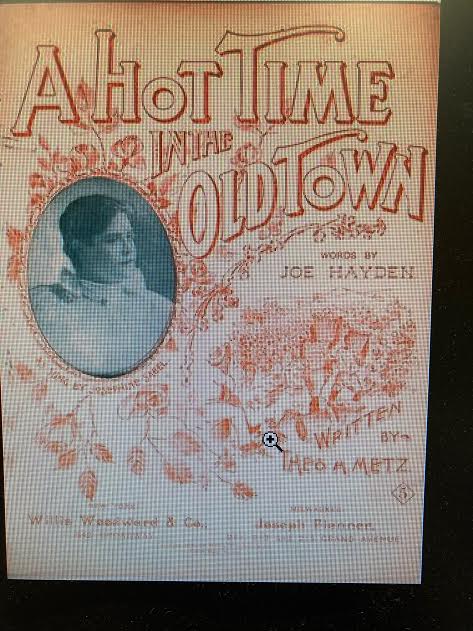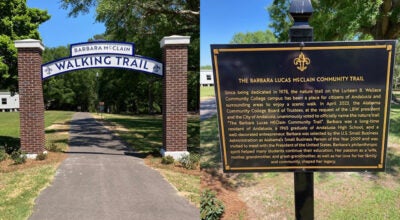REMEMBER WHEN: A Glimpse at Andalusia in 1896
Published 3:46 pm Friday, December 11, 2020
|
Getting your Trinity Audio player ready...
|
A popular song in 1896 was “There’ll Be a Hot Time in the Old Town Tonight.” The song became a favorite of the American military around the start of the 20th century particularly during the Spanish-American War.
Apparently there were some “hot times in the old town” of Andalusia during the 1890s. G. Sidney Waits wrote in his book, “From the Halls of Montezuma,” “SALOONS WERE IN ABUNDANCE IN EARLY ANDALUSIA – In the early days, Andalusia was plagued with saloons. There were several located in the downtown section prior to and shortly after the turn of the century. There must have been one or more saloons down at old Montezuma back when it was such a prominent little South Alabama village. Most of the communities of the day demanded at least one.”
Waits penned, “Back in those days, whiskey was not sold in small bottles as is the case today. A person would purchase a whiskey jug and as it was consumed, he would simply have it refilled as needed from time to time at the local saloon. There are jugs embossed with several Andalusia saloon dealers’ names such as Stokes, Adkinson, and M. Riley.”
“The J. L. Adkinson Saloon was located where the present First National Bank Building stands today. Another was where Ward and Co. is located on Court Square and was operated by ‘Monchie’ Riley. The saloon in the old Thagard Drug building on Pear Street was operated by T. M. Campbell, and it remained in operation until prohibition came along. After that a soda fountain was introduced to its patrons!”
When visitors come to the Three Notch Museum, they get to see a few of these whiskey jugs of the past. One can only imagine the stories that go with these artifacts of interest!
The town newspaper editor, A. R. Powell, of The Covington Crescent, had reports of accounts of the concern of some citizens about the goings-on in late 1896.
December 18, 1896 – “How should Christmas be spent? How is it generally spent? For what is it celebrated? It is celebrated as the anniversary of the advent of the Savior into the world and should be a season of universal rejoicing all over the earth. However, as is usually the case, it should not be characterized by revelry drunkenness and riots. This is not the way to celebrate the birth of a Savior – one whose utterances were in direct opposition to these practices. Better not celebrate the holidays at all than to give yourself up to these vices. How are you going to spend it, gentle reader?”
Back in November 1896, the following appeared in the newspaper, “An anti-whiskey club was organized here Friday. About 25 names were enrolled as members. They have for their object the preservation of law and order. Whiskey is the real root of all the disorderly conduct practiced by some of the people of Andalusia. To make a successful fight against the blighting influence of this demon, the special whiskey law of this beat must be amended. Will someone step up and start a petition to that effect, or will each one leave it as someone else’s duty and let the golden opportunity slip? Procrastination is the thief of time.”
Not surprisingly, the town Baptists came forth with some ideas. “On the next fifth Sunday meeting, the Zion Association is to be held with the Andalusia Baptist Church. What should the attitude of our churches be toward the traffic in intoxicating drinks? Is the use of intoxicants as a beverage compatible with Christian duty and character? The public is generally invited to attend, and we would be especially be glad to see the churches in the association well-represented at this meeting. L. M. Thomasson, Chairman.”
December 11, 1896 – “The people of Andalusia and vicinity have left no stones unturned in the cause of anti-whiskey, and we truly and faithfully pray that the almighty God will aid and clothe us with power from on high to keep down the sale of the liquid demon that brings untold misery and degradation to so many souls.”
Local attorney Ed T. Albritton offered a set of by-laws which he drafted. “The organization shall be known as the ‘Law and Order of Beat One of Covington County.’ Its object shall be to aid in the suppression of vice and crime generally and especially to suppress the illegal sale of intoxicating liquors and of gambling and of cursing.”
In the meantime, the editor printed more reports of problems especially in the downtown where several saloons occupied storefronts on the Public Square.
“Evidence of gambling is often seen in (playing) cards torn into shreds and scattered over the streets. On our minds it leaves the impression that someone became dissatisfied with his luck and attributed his losses to marked cards and tore them to pieces trying a new deck. This illegal practice indulged in by some townspeople could become a bigger problem.”
Other important happenings seemed to downplay the “whiskey” problem in the little town.
November 6, 1986 – “It will not be long before the new courthouse will be completed. We will then have a fine courthouse and jail which will be an ornament to the town. When people go into the county to prospect, they first go to the county site and examine the public buildings. They speak more for the wealth and prosperity of a county than anything else. The roof of the courthouse is about completed.”
This was the beautiful courthouse built in the middle of the square, the building facing east that had the large clock and bell. This stately edifice was torn down in 1917 when it was only 20 years old to make way for the present courthouse, a much larger structure that was needed at the time.
“After our courthouse gets finished, a person entering town, before he gets on the street, would think he was entering a modern Rome or some other large city, but when he gets into the heart of the town and looks at the condition of the streets, views the stores and dwellings, he quickly changes his opinion and decides that Andalusia is only a small town with brilliant prospects for a future. No town in this era of development with as much natural resources immediately surrounding can for many years remain closed among the villages. No county in the great state of Alabama offers greater inducements to capitalists seeking for an investment.”
November 6, 1896 – “TRAVELLERS – When you are in Andalusia and want the best fare in town, stop at the COMMERCIAL HOTEL. If you want your stock to receive the best accommodations in town, put them up at the COMMERCIAL STABLES.”
“Our streets are in terrible condition – so much so that a portion of them resemble a South American jungle more than they do the streets of an up-to-date county site. Others are unobstructed by woods, but they are so rough that it is almost impossible for a person to walk them without stumbling. There are different ways to bring about an improvement. If the people would only take hold of the matter, but what is everybody’s business seems to be nobody’s business.”
“The Times thinks that the best plan would be to levy a street tax. Then the burden of keeping up the streets would be shared alike by all the citizens of the town and divided out. Thus, the cost would be so small it would hardly be realized. It’s plain that something should be done to make the town look more decent like it was inhabited by a people of some “git-up and git” and energy. If it’s left with the people to come together and contribute to the funds necessary to do the work when Gabriel’s trumpet blows, these pesky swine will squat in the woods, and the driver of some divine chariot will get the life jostled out of him in the break-neck race across these rugged streets.”
“What Andalusia could be is as the ‘things that might have been.’ A railroad is what is required to ‘press the button’ with railway facilities, she would spring up as if touched by magic, and her sister towns would soon fade comparatively into insignificance.”
December 11, 1896 – “The question of the extension of the Georgia Central from Searight through Covington and on to the gulf is going its rounds. There is no doubt in the fact that time will consummate all these plans sooner or later. There is a brilliant future for the Central when it does move.”
In looking at historical accounts, we know now that it took a few more years, about three, for the Central of Georgia railroad line extension from Searight into downtown Andalusia in 1899. The train arrived, the whistle blew, the goods started pouring in, the farmer’s products started shipping out, and the town grew in one year with a double in population from 250 to 500 and by the 1920s to 5,000. Shipping farm products out and receiving shipments of building materials, mules for hauling, and everything that could be bought in a mercantile store resulted in real growth for the county seat. Transportation was the key!
Sooner or later, the saloons on the square became replaced with business storefronts. The churches got established. It was reported in one newspaper issue that women could at last walk from their neighborhoods on the downtown boardwalks later replaced by sidewalks without being accosted by inebriated persons!
Other glimpses of the 1890s will follow. To see how far the county seat of Covington has come in over a century is interesting. Wish we could thank all those citizens of the past for their part in progress who made many decisions and actions that resulted in “OUR TOWN” becoming “the heart of South Alabama.” When we browse through the old newspapers, we can Remember When things were much different than they are today. Most importantly, we can appreciate the ones who led the way in our proud past for what became our promising future.
Sue Bass Wilson, AHS Class of 1965, is a local real estate broker and long-time member of the Covington Historical Society. She can be reached at suebwilson47@gmail.com.








